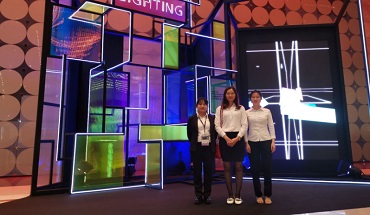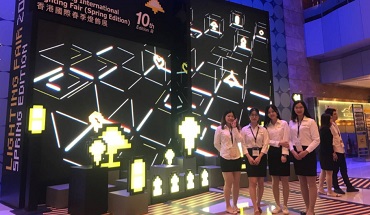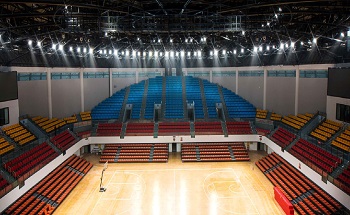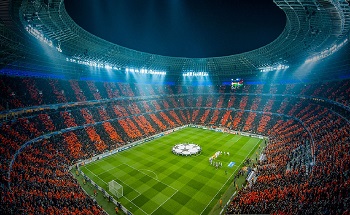LED Stadium Light vs HID Sports Lighting Fixtures
LED Stadium Light vs HID Sports Lighting Fixtures
1. Limitation of Using Metal Halide, Halogen and Fluorescent Lights for Stadium
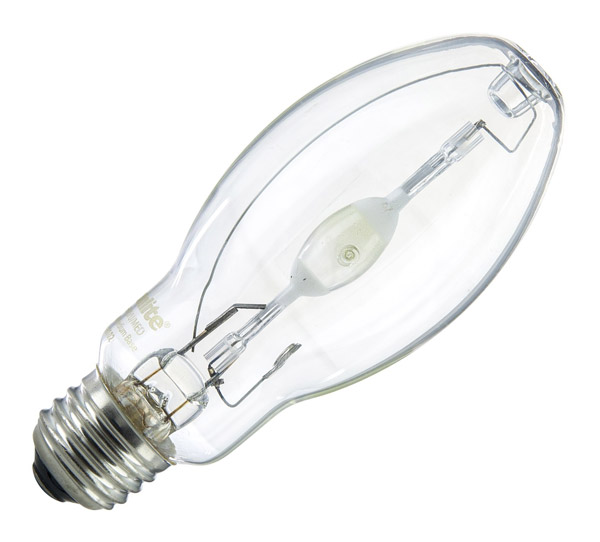 There are various forms of lighting in sports field application. These are Metal Halide, Halogen (filament), Florescent, and LED lights. All these lights have their benefits and limitation in various circumstances. In this post, we are going to look at the limitations of using the metal halide, fluorescent and halogen bulbs for sports field. We will begin by giving a brief explanation of how each light works.
There are various forms of lighting in sports field application. These are Metal Halide, Halogen (filament), Florescent, and LED lights. All these lights have their benefits and limitation in various circumstances. In this post, we are going to look at the limitations of using the metal halide, fluorescent and halogen bulbs for sports field. We will begin by giving a brief explanation of how each light works.
Halogen bulbs
These bulbs use a filament that heats up (glow) when electrical current passes through. The glow will produce light while emitting a lot of heat. In terms of energy conservation, these bulbs are energy inefficient. They consume a lot of energy leading to high operating costs.
Metal halide
These bulbs operate much like their fluorescent counterparts. Instead of the filament glowing with is the case with the halogen bulbs, these bulbs contain a gas that glows. With a basic understanding of physics, heating gas does not emit as much heat as heating metal. While these bulbs are more energy efficient, they contain dangerous chemicals in their coating, which is harmful to our health.
Now that you have a basic understanding of how each of these bulbs works. Let us look at their limitations and why they are not appropriate to use in sports fields.
a. Emits a lot of heat
The main disadvantage of these bulbs is that they emit a lot of heat. As you know, competition in sports fields involves high workout. High-intensity workouts, make our bodies to produce heat. Also, wherever there are competitions, there is a multitude of spectators. Therefore, unless you are prepared to use a lot of money in air condition a sports field, you don’t want any increase in temperature. Besides, high temperature hastens the wear and tear of the bulbs themselves. While they may be cheaper to purchase, they have a very short life span. This means you will need to replace them more often, increasing your running costs.
b. Increased maintenance costs
Halogen and metal halide bulbs are generally basic in structure and function. This makes them have an advantage when it comes to the initial cost. However, these bulbs are not energy efficient. Therefore, while the incandescent and halogen bulbs may cost less, they consume a lot of energy. This increases the monthly energy bills, making them uneconomical. Besides being, energy inefficient these bulbs last for only a few months while compared with LED lights that have a lifetime of over 20 years.
c. Poor Light Distribution
Metal halide and incandescent lights are designed to emit light in all directions. While this might sound great, it has its limitations in a sports field. For the best lighting conditions in these fields, lights need to be sent in a specific direction. This is where the LED lights come in. These lights provide more control over light control, ensuring less light is lost. Additionally, the metal halide, halogen, and fluorescent bulbs send more light towards the sky, increasing light pollution.
d. Increased glare
Glare is an uncomfortable reflection of light that makes our eyes blind. It is often produced when there is a high reflection of light on the surface or walls. Metal halide bulbs and halogen bulbs light tend to form a shadow causing a glaring effect. This effect can be dangerous in the sports field. For instance, in the soccer field, the glare may cause temporary player blindness causes him/her to miss a shot. Additionally, in a competition like biking this may cause an accident if an athlete goes out of track or collide with another competitor.
e. Health risks
The main limitation of the tungsten and metal halide bulbs is that they operated at high temperature. This can lead to accidents when used near combustible materials or if mishandled. Metal halide bulbs are also hazardous to the environment as they emit a lot of UV radiation. These radiations are known to cause skin burns or worse retinal damage. What is even worrying is that these bulbs deteriorate with time. As time goes by these bulbs, become more fragile and susceptible to bursting. Additionally, the fluorescent bulbs contain toxic phosphorous in their internal coating which is harmful to your health.
So, what’s the alternative?
LED (light emitting diode) bulbs are the ultimate choice for sports field lighting. These bulbs offer two primary benefits over the incumbent lighting technology. These include a longer life span and low energy use. Additionally, these bulbs diffuse light well, providing an optimal lighting solution to sports fields and arenas. What’s more, they are pretty much cheaper to use and maintain in the long run!
2. Benefits of LED Replacement
LED lighting also has many specific advantages when it is used in work environments. Here are some of the main reasons why is it worthwhile to replace HID solution for sports fields.
a. LED has a longer lifespan
One primary reason people are stuck on LEDs is because of how long the bulbs last. Compared to incandescent lighting, LED bulbs have more to offer, especially when longevity is concerned. People who use light-emitting bulbs may never have to change their bulbs. Incandescent bulbs last an average of 1,000 to 2,000 hours. At that rate, depending on how much you use electricity, you will have to change bulbs every two to three months. LEDs last an average of 25,000 to 50,000 hours. At this rate, people may only have to change their bulbs every five to six months, but this again is based upon how much you use electricity.
b. LED has higher energy efficiency
Energy efficiency is one factor many people are looking for when they purchase bulbs. As far as energy efficiency is concerned, when compared to incandescent bulbs, light emitting bulbs exceed them by a whopping 80 to 90 percent. Light emitting bulbs convert more than 75 percent of its energy into light. With incandescent bulbs, more than 20 percent of the light is lost due to heat and other forms of energy.
c. Eco-friendly
A lot of people are focusing their attention on helping the environment. Unlike incandescent bulbs, LED bulbs are not toxic and chemical free. Incandescent lighting contains harmful chemicals, such as mercury. Mercury is one of the many chemicals that are harmful to the environment.
d. Special operations
There are not many light bulbs that can withstand extremely cold or hot temperatures. These illumination devices have proven they are worthy by being able to withstand harsh hot and cold temperatures. Fluorescent lamps have many different issues with harsh and severe weather. Extremely low temperatures damage and destroy fluorescent lamps.
e. Exceptionally flexible
Another feature people enjoy about using these devices is the control they have over how much light thy use. If you want a relaxed and calm atmosphere, these devices can be dimmed. LEDs have an illumination system no other bulbs have. LED lighting systems have many different effects to help the user achieve different moods via the effects. These bulbs can set the mood for the mind and be beneficial to the eyes.
f. They are durable
There is nothing better than purchasing a product that lasts. LEDs last a long time and can withstand harsh conditions, such as severe weather. The durability of LEDs is the primary reason many clubs use them for Sports Field lights.
g. Cost saving
It needs to be mentioned that the cost saving benefits of LED bulbs are very important in the sports fields.
8. A range of colors
Another advantage of LED light is that they are available in a wide variety of colors to light a field on different occasions which is not possible with regular fluorescent tubes and bulbs. You do have to use filters to get different colors. Hence, it becomes extremely easy to get them in the color of your choice including neon colors. Amber, blue, green and red are four basic colors in which LED lights are available.
Lastly, improved safety is one of the most important benefits associated with LED lighting. As LED light produces no heat, it can be left on for several hours without any incident taking place, and they are cool when touched.
3. How to Replace HID with LED
Much as HID lights are suitable for certain buildings, it is not possible to deny the impacts of LED lighting. From lower long-term savings to lower initial costs, the replacement of LED lights supersedes even high-pressure sodium (HPS) and metal halide (MH). However, many people do not know how to replace their outdated HID lights with LED equivalents.
Though LED technology is very unique, conducting an easy lumen-to-lumen swap may not be the right strategy to upgrade to LED. Any person doing so will have far more light than required, which will increase their electricity bills.
Luckily, several manufacturers now provide options for replacing HID lights to LED. In general, these replacements come in two versions. One of the LED replacements uses the metal halide ballast already installed. This is simple to replace as you just need to remove the metal halide bulb and replace it with LED in that same socket.
The second version is called the ballast bypass. It needs rewiring of the fixture so that you can remove the entire ballast out of the circuit. This helps by supplying line voltage instantly to the socket.
While these two approaches help you to switch from HID lights to LED, there are important factors you should consider before/when making that replacement.
a. Mean lumens and initial lumens
Another factor we should consider is the mean lumens and initial lumens. The latter refers to the number of lumens that a light source emits once it is ignited. It is usually the most remarkable metric for lumen output. In fact, it is what many manufacturers will include on their product pages and specification sheets.
Mean lumens, on the other hand, factors in lumen depreciation. It can also consider how much the light source will fade with time.
HID and HPS fixtures have higher initial lumens than mean lumens. This is because they do not suffer from serious lumen depreciation. That is why LED lights run much more efficiently than HIDs.
b. Wasted light
Unlike LEDs, HIDs emit light at an angle of 360 degrees. Lots of the light does not escape as it is prevented by the bulky and big housings.
LEDs though are directional. This means that they emit light straight to where they point. Hence, lots of light goes exactly to where it is required. Meaning you won’t spend money on the light that you don’t use.
Due to this huge increase in efficiency, we can comfortably state that a single LED lumen might be equal to 4 HID lumens.
c. Rated life
Rated life refers to the duration a fixture can last before being replaced – usually in L70 rating. It indicates the number of running hours a fixture will emit 70 percent of its original lumens. Metal halide lights have L70 lifetimes ranging from 10,000 to 25,000 hours.
This output might sound very impressive on paper, but otherwise in reality. Their output will decrease significantly and quickly and will not supply all those lumens to space.
LED lights, on the other hand, can easily attain 100,000, 200,000 and even more than 400,000 hours. The efficacy lost through reflection or glass and rated life affects LEDs lumen output. The good thing is that LED lights are great at limiting those effects.
Conducting an LED light replacement should lead to a 50 percent reduction in energy use costs every year. Additionally, it might reduce electric demand charges. However, the impact of these savings will depend on how many lights you replace, electric rates and time of operation.
While LED technology is more beneficial than HID lights, the decision to make the change requires these considerations.
